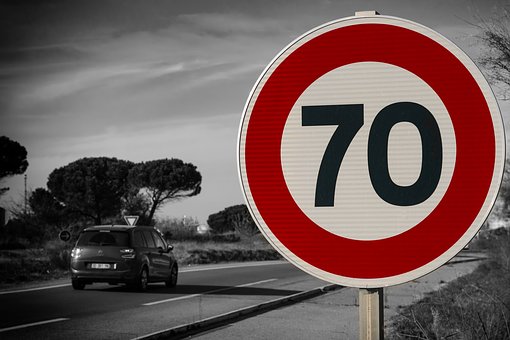AS WITH ANY piece of equipment, there are guidelines on how radar and speed cameras should be used.
However, these guidelines are being ignored, and motorists are being unfairly (and possibly illegally) penalised as a result. We are indebted to Aussie Speeding Fines (follow link here) for the following information, culled from operator and training manuals for speed detection devices currently being used across Australia and policy manuals from both the Queensland and Victorian police.
Even a cursory examination of the guidelines reveals how these are being disregarded.
Here’s what it says in the Queensland Police Policies Manual:
6.3.1 Positioning of speed detection devices.
The use of a speed detection device at a site must be consistent with the perceived need for speed limit enforcement and the benefits likely to be gained for society due to the device being operated at that location.
The problem here is that many motorists often don’t perceive any need for speed limit enforcement, or the appropriateness of the speed limit being enforced, at most locations where speed detection devices are sited. The vast majority of fixed speed cameras are positioned where they will generate the most revenue, and that’s usually on a straight, well-maintained, multi-lane highway. Case in point: newly operational average speed cameras on the freeway between Mt Barker and Callington (South Australia) are positioned where there have been just three crashes involving minor injuries and 14 with no injuries recorded since 2010. The public will “perceive a need for speed limit enforcement” on roads where exceeding the speed limit recognisably increases the risk (and we’re not talking about “every k over is a killer”). Freeways and motorways (the usual location of speed cameras, point-to-point cameras and mobile radar traps) are limited to 100 or 110km/h. Overseas, roads of similar standard are regularly posted at 130km/h and in some countries, considerably higher. Crash statistics from these countries indicate no increase in crashes or injuries compared to our roads with lower speed limits. Generally speaking, the public often perceives speed limits to be too low (otherwise, why would they be travelling at speeds above the limit?) and is unconvinced that many speed limits are appropriate for the conditions and quality of the road.
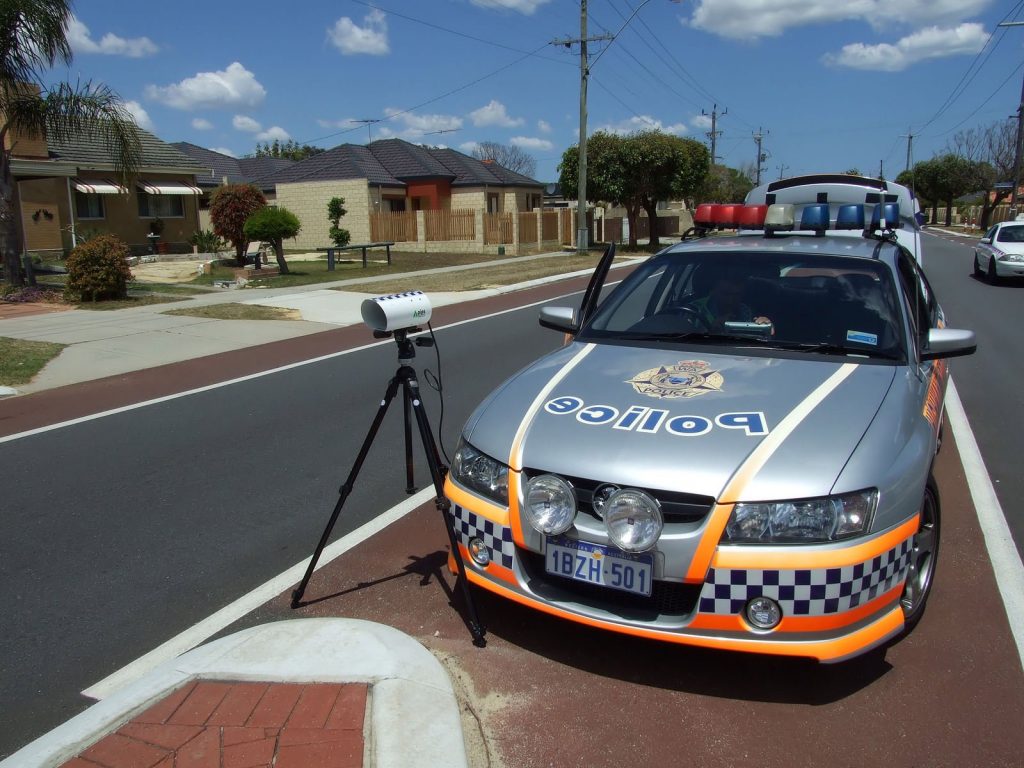
6.3.2 Restrictions on speed detection device site locations (restricted site locations)
Speed detection devices should not generally be operated in the following restricted site locations:
(i) On a road which could be described as the downgrade of a hill;
(ii) On a road within 300 metres after a sign indicating any decrease in the prescribed speed limit;
When operating a speed detection device in any restricted site location, the officer in command is to consider the aspect of fairness towards the motoring public. In every case, that officer is accountable for justification of the operation of the device at the restricted site location.
Every motorist in every state can quote numerous occasions where mobile speed detection devices have been located at the bottom of a hill, or within 300 metres of a sign advising a change of speed limit. Even worse, many fixed cameras are positioned on downhill gradients. (Once again citing a South Australian case: there is a fixed speed camera at the top of the South Eastern freeway and another well down one of the steepest downhill stretches of freeway in Australia. Compounding the problem, once motorists turn off the freeway onto Cross Road or Portrush Road, they are faced with multiple speed and red light cameras as both roads continue the downhill gradient. Multiple examples of similar cases in other states are common.) Coming out of a 100 or 110km/h limit on a downhill gradient, it is necessary to brake, often quite heavily, to bring a vehicle down to the posted limit. Coming off the accelerator pedal when the sign is sighted will not usually reduce vehicle speed to the posted limit. In the case of the South Australian freeway, coasting from the first speed camera to the second (or even using cruise control set to the speed limit depending on the vehicle), unless the brakes are applied or a low gear selected it is easily possible to be exceeding the speed limit by 30, 40 or more km/h by the time the second speed camera is reached. Some vehicles do not allow selection of a suitably low gear to maintain the posted speed without braking.
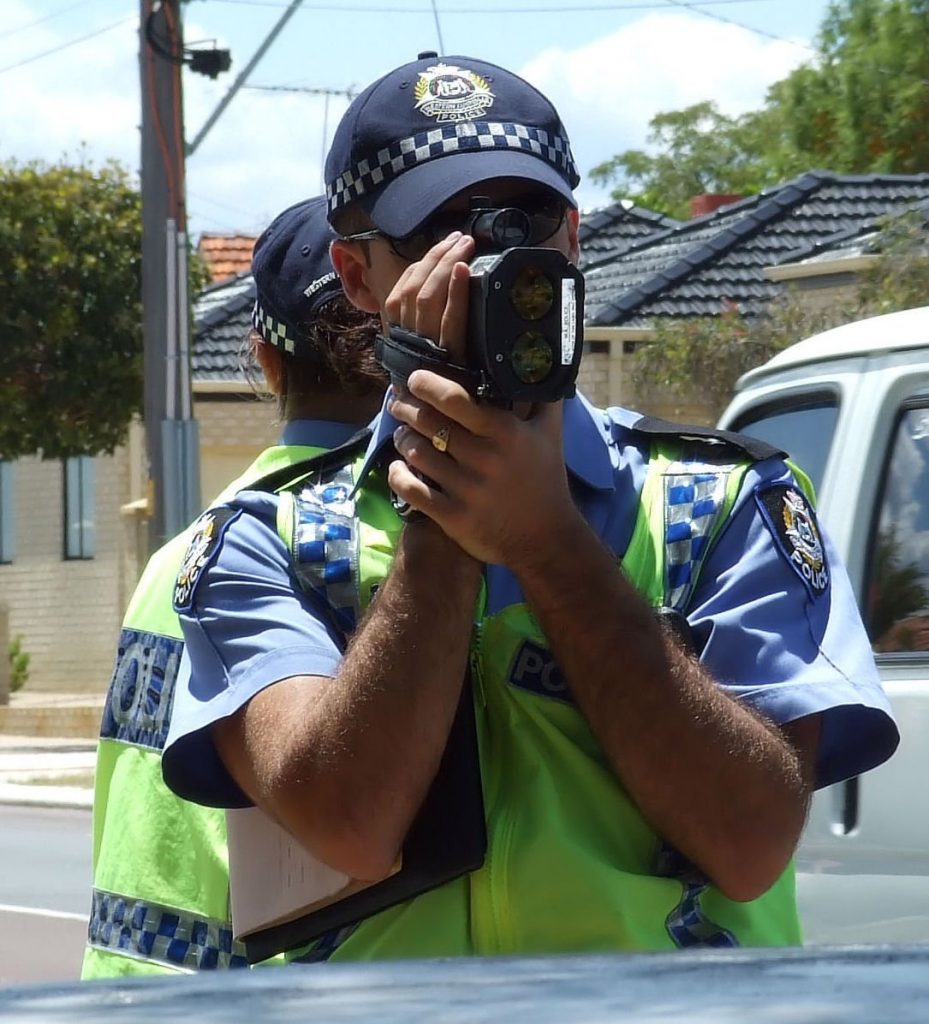
6.3.4 Responsibility of authorised operators
Authorised operators are to ensure that the speed detection device:
(v) Is not placed or stored on the dash board of a Service vehicle or carried externally of the vehicle whilst in motion except for a mobile radar device which is to be fitted in compliance with service policy.
A video shown on A Current Affair of a Porsche driver pulled over in Queensland clearly shows the speed detection device being placed on the dashboard. Quite simply, nobody checks or enforces the use, storage or placement of speed detection devices, and the guideline is regularly and blatantly contravened. This then raises the issue of how accurate the speed detection device may be if it has been mistreated or not handled in accordance with the manufacturer guidelines.
6.3.7 Providing evidence of speed detected to intercepted drivers
A driver of a motor vehicle intercepted as a result of the use of a speed detection device, where the driver’s speed has been detected in excess of the prescribed speed limit should, where practicable, be afforded the opportunity by the authorised operator to view the speed displayed on the speed detection device.
All well and good, but how do you know the speed reading on the device applies to your car? And there are plenty of reports of motorists being denied the opportunity to see the reading, or being treated rudely or aggressively when they ask. Police officers don’t take kindly to having their actions questioned, and in any case, most motorists are not technically qualified to evaluate what they are being shown.
6.5 Follow speed
(ii) Whether the speedometer of the following vehicle is currently certified as accurate by having been tested within the previous six months.
Asking to see a certification of the police vehicle speedometer will certainly cause aggravation to the police officer and potentially see him/her raising the stakes. Another issue here is the “originating specifications” against which the speedometer has been tested. When drivers have asked to see certification, they are almost inevitably told that the equipment has been tested and is accurate, without any substantiation.
6.6 Estimation
An officer intending to use estimation as a means of speed detection should consider that:
(i) A prosecution for an offence of exceeding a prescribed speed limit based solely on the evidence of the officer’s observations and experience has a greater risk of failing compared to more conventional means of speed detection.
Police officers are allowed to use their “estimation” of your speed to issue you with a fine, as one unfortunate truck driver discovered to his cost in New South Wales, despite his onboard recording data showing he wasn’t exceeding the speed limit. In a previous article, we invited any police officer to take a test estimating the speed of oncoming or departing traffic to see for ourselves how accurate their “observations and experience” might be. Not surprisingly, nobody has come forward.
6.8 Amount of tolerance allowed in speed detection
The amount of tolerance allowed in speed detection should not be made public knowledge.
Most motorists believe that there is a degree of tolerance in speed detection. There isn’t. There are multiple examples of drivers being penalised for exceeding the speed limit by as little as one km/h, despite Australian Standards allowing a plus or minus 10 percent error for speedometers in new vehicles (most new vehicles now set the speedometer to over-state the speed, as you will see if you measure your speed using a GPS device). Police officers I have spoken to admit, off the record, that in some states they have an unofficial tolerance of 6km/h, still less than the allowable margin for error on a speedometer. Other sources suggest that fixed speed cameras actually have a higher tolerance than mobile speed detection devices. Finally, the fact that the guide allows a degree of tolerance is a tacit admission that speed detection devices are inaccurate, without admitting by how much.
6.9 Testing and accuracy calibration
6.9.1 Speed detection devices
The Officer in Charge of the Calibration Laboratory, Radio and Electronics Section, is to ensure that testing and accuracy calibration of speed detection devices is in compliance with the relevant Australian Standard and the manufacturer’s guidelines.
The accuracy of the testing equipment is to be traceable to the National Measurement Act.
It has often been stated in court that speed detection devices do not need to comply with Section 10 of the National Measurement Act, and motorists attempting to use this as a defence have had their appeals rejected. The National Measurement Act 1960 was created to provide a uniform system of weights and measures throughout Australia. Speed cameras, laser and radar devices are required to be traced back to an appropriate Australian standard. Without an NSC number, these devices do not comply with Section 10 and therefore any readings taken cannot be used as proof in a court of law. However, they are, on a regular basis.
6.9.2 Distance calibration bases
Fixed distance calibration bases are to be:
(i) Surveyed by a qualified surveyor;
(ii) Measured with measuring equipment traceable to the National Measurement Act;
(iii) Tested for accuracy every two years by a qualified surveyor, and whenever damage or movement to the base is detected;
(iv) Established in compliance with the calibration procedure set out by the Supervising Engineer, Surveyor, Land Survey, Queensland Department of Transport and Main Roads.
Portable distance calibration bases are to be established:
(i) Using tape measures that are certified accurate and traceable to the National Measurement Act.
(ii) Using tape measures that are in good condition and are used only whilst certification is current.
That only sites that have been checked by “qualified surveyors” are selected or only tape measures are used that have been certified under the National Measurement Act is beyond credibility.
The Victoria Police Mobile Cameras Policy Manual follows broadly similar lines (as do policy manuals in other states).
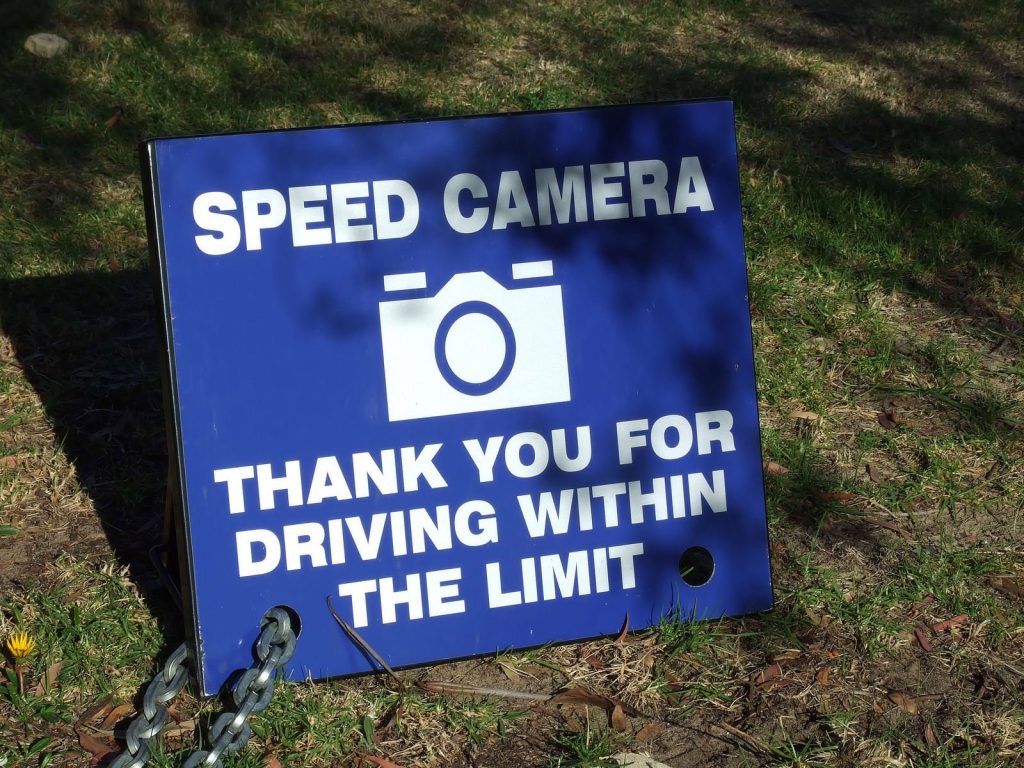
2.2 Operating Principles of the Mobile Camera Program
2.2.1 Under no circumstances are speed camera vehicles, tripods or flash units to be disguised by signs, logos, breakdown of vehicle (e.g. boot open or spare wheel/jack visible etc.), tree branches, lamp posts, dust bins or any other means that would generate public perceptions of sly operations.
So what about speed camera cars disguised as delivery vehicles, cameras in wheelie bins, speed traps hidden behind trees or advertising hoardings and any number of other sneaky, devious means of entrapping the maximum number of motorists? I well remember seeing (and not being caught by) an old lime green Nissan with a speed gun mounted to the roof, and a friend of mine was pulled over by an old Holden with surfboards on the roof and issued with a fine for speeding as detected by their radar. Devious methods of catching speeding motorists create a sense of entrapment, not a feeling that catching speeding motorists is in the public interest. Visible speed traps are a recognised deterrent, although authorities will parrot the line that motorists must realise that they can be caught at any time, on any road, for any speed above the posted limit. In the Adelaide Hills, signs have gone up notifying motorists that “covert speed detection” devices have been deployed – covert means “hidden”. Such behaviour entrenches the belief that speed cameras are more about revenue than safety.
2.2.7 Voluntary compliance will not be universally achievable, and a program profile will always be necessary for both general and specific deterrents.
This is an open admission that speed detection devices will never achieve universal adherence to speed limits, as amply demonstrated by the increasing number of motorists being caught exceeding the limit. Then there are the recalcitrants who will not be dissuaded from driving at dangerous speeds by any amount of advertising and threats (or even loss of licence and impounding of their vehicles), and those who deliberately obscure or alter their number plates so as to avoid detection. However, motorists who have momentarily and/or unintentionally infringed continue to be heavily penalised.
2.2.8 To achieve these objectives in the most effective manner, the enforcement activity must be consistent, meaningful and applied at high-risk times of the day.
I can quote my own situation of being “caught” by a speed camera at 4.50 am, on a deserted arterial road, with cruise control set to the speed limit (yes, the camera was at the bottom of a long downhill slope), on a road that anywhere else would have had a 70 or 80km/h speed limit, for travelling at 68km/h. At least the enforcement was “consistent”. And my appeal to the Expiation branch that it was a trivial offence, especially in light of an excellent 45-year driving record, was dismissed out of hand. On the rear of Queensland expiation notices, it is clearly stated that a previous good driving record has no bearing on the imposition of a fine. Enforcement is all about penalties, never about encouragement or reward, reinforcing the increasing attitude that the primary objective is revenue, not behaviour modification.
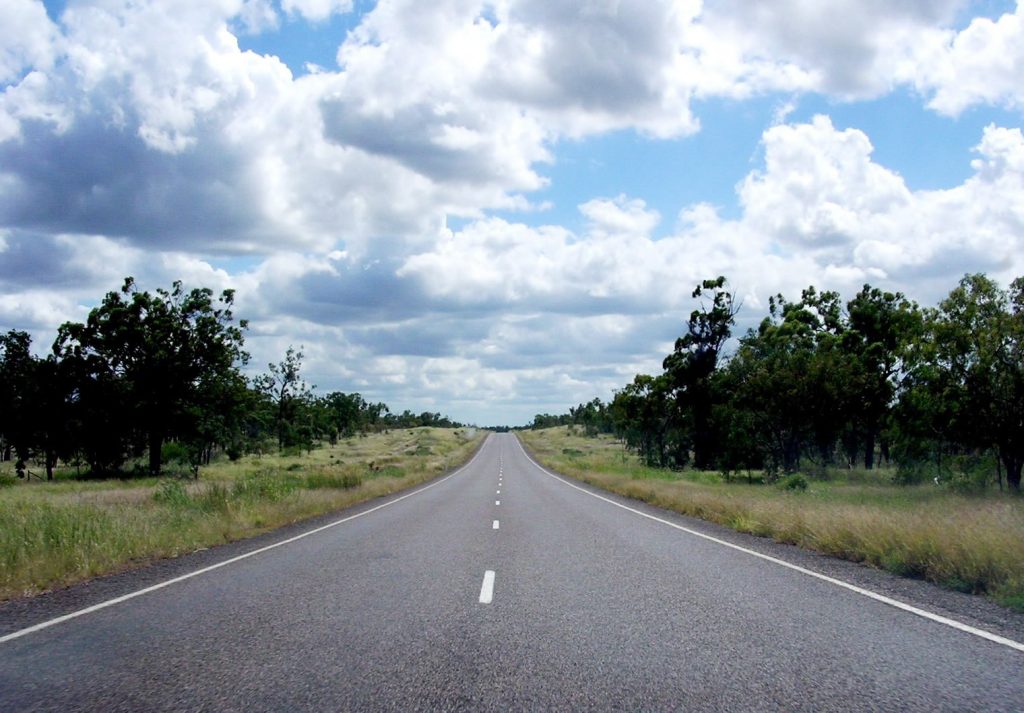
2.2.9 To achieve the essential ingredient of community support and program ownership, there must be a popular belief that the enforcement is fair, impartial and objectively administered in the community interest based on the achievement of road safety objectives.
There is so much wrong with that statement, it’s hard to know where to start. Obviously and demonstrably, community support and “program ownership” is minimal, and what little support exists is being eroded every day by blatant and cynical manipulation of the system to maximise revenue, not save lives. Speed cameras and radar have been shown, time and time again, to have little or no effect on the road toll, yet governments persist in telling us the proliferation of speed detection devices is a road safety initiative. No rational person believes it is fair, impartial or objectively administered.
4. Strategic Deployment of Mobile Cameras
4.1 Mobile cameras, as a general rule, should not be used during peak traffic periods, particularly in the inner metropolitan area.
I can’t recall an occasion when driving in Melbourne, in the suburbs and/or inner metropolitan area during peak hour that I haven’t seen a camera car or a cruising police car with a radar gun mounted on the roof rack.
6. Mobile Camera Site Selection
6.1 Mobile Camera used at properly selected sites will also be able to withstand public scrutiny, clearly demonstrating fair and reasonable speed enforcement in the interests of improving road safety through the enforcement of posted speed limits.
Even the most cursory reading of the statistics shows that the road toll is not being reduced by speed detection devices, despite record numbers of motorists being penalised every year. Income from speeding fines is well over $1 billion per year (and rising year on year), and governments are addicted to this revenue stream. According to an international study, speeding (exceeding the posted speed limit) is a factor in only five percent of crashes, and rarely the only factor. Mobile camera use demonstrably cannot withstand public scrutiny, yet the authorities persist in telling us it’s about reducing the road toll and improving road safety.
6.2 Every street, road or highway considered for evaluation as a Mobile Camera site MUST have a significant documented history of serious and major injury collisions within the previous 12 months.
One of the most heavily speed camera infested highways in Victoria is the Hume Freeway, and it is probably the best designed and maintained freeway in the state. Where are the statistics that show this (and the many other multi-lane, median-strip divided, high quality roads where speed cameras are most prolific) has a higher-than-normal history of serious and major injury collisions? They don’t exist, because speed detection devices are inevitably located where they can catch the most motorists, not in areas of highest risk. Fixed cameras, point-to-point cameras and mobile radar cars are invariably situated on the safest roads.
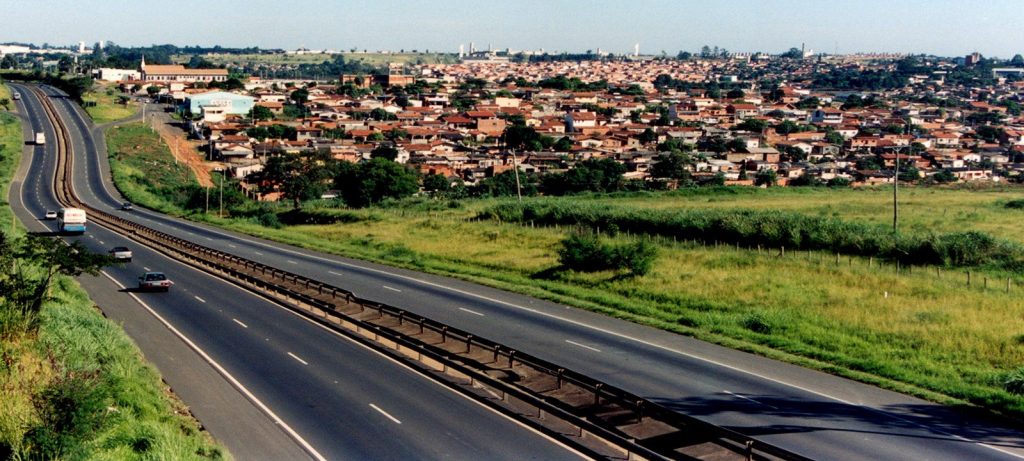
15. Mobile Camera Sites: Physical Field Evaluation
15.3 Criterion 5 – A site shall not be:
On a bend in the road;
Descending down gradients or within 300 metres of the bottom of a gradient or hill;
Within 200 metres of a change of speed zone.
15.7 Criterion 7 – Careful background evaluation of each site shall be conducted for any sources of reflection [followed by a long list of possible sources of reflection].
Most mobile radar traps are placed where they can’t be seen by approaching motorists. Often this is on or just around a bend in the road. Downhill gradients and changes of speed limits we addressed earlier. Reflections have been shown to affect radar readings (and the readability of number plates and other important details). While the reflection issue may have been addressed in the case of fixed cameras, even a cursory study of camera sites will reveal many of the potential reflection issues mentioned. Mobile camera and radar cars almost certainly pay little or no attention to reflections when selecting their set-up locations.
There is much that’s wrong with speed detection and enforcement across the nation. Blatant disregard for the rules and guidelines only serves to increase the level of cynicism amongst drivers and fails to convince them of the need to comply with speed limits they see as random and inconsistent. Unfortunately, challenging a speeding fine on the basis of these rules, while often successful, is discouraged by the expense and time involved in taking the matter to court.
No sensible person disagrees with discouraging dangerous behaviour on our roads. However, the authorities seem to have lost sight of why speed detection devices are employed. It isn’t to catch and penalise drivers for minor infringements. Nor is it to fill government coffers with revenue.
Have your say about underhanded police tactics, speed traps set for revenue rather than safety and all the other issues surrounding speed limit enforcement (including the illogical setting of speed limits, poor signage, heavy-handed enforcement etc.) The more we speak out, the greater chance that something will be done about the increasing dependence on motorists to top up the coffers of general revenue.
